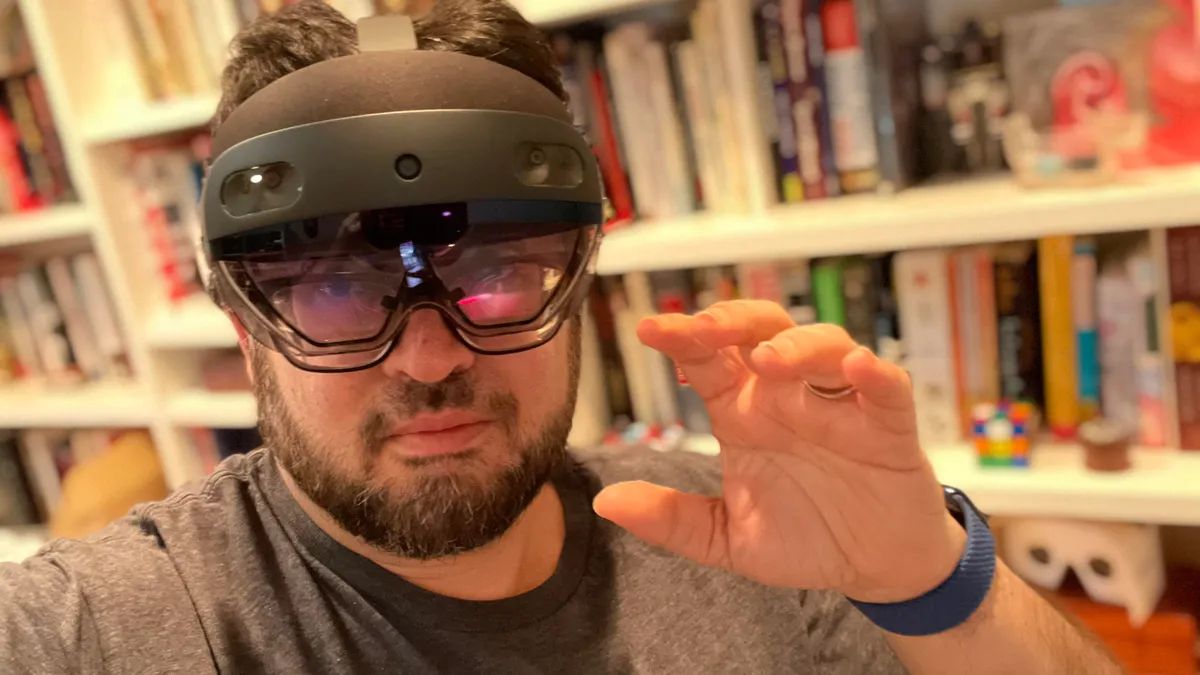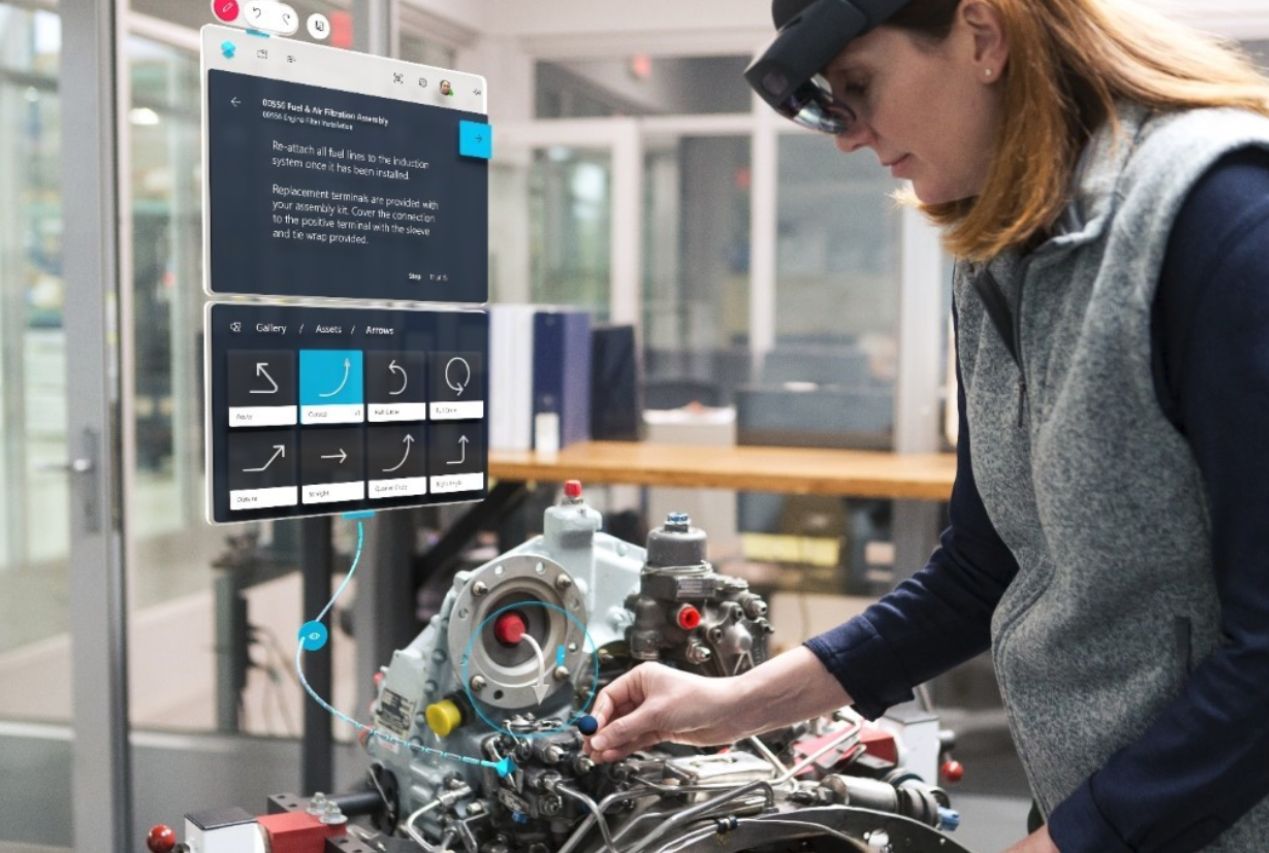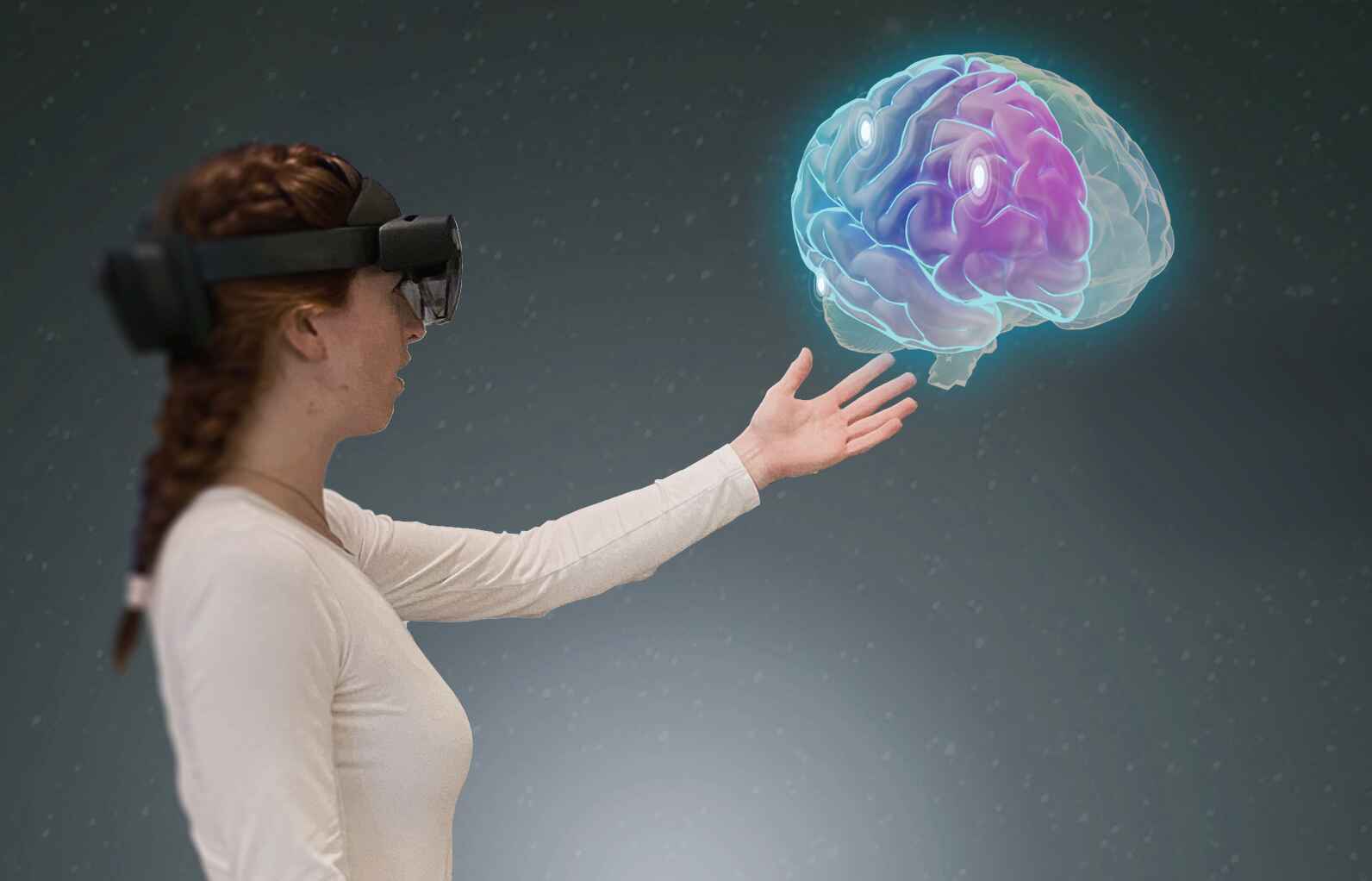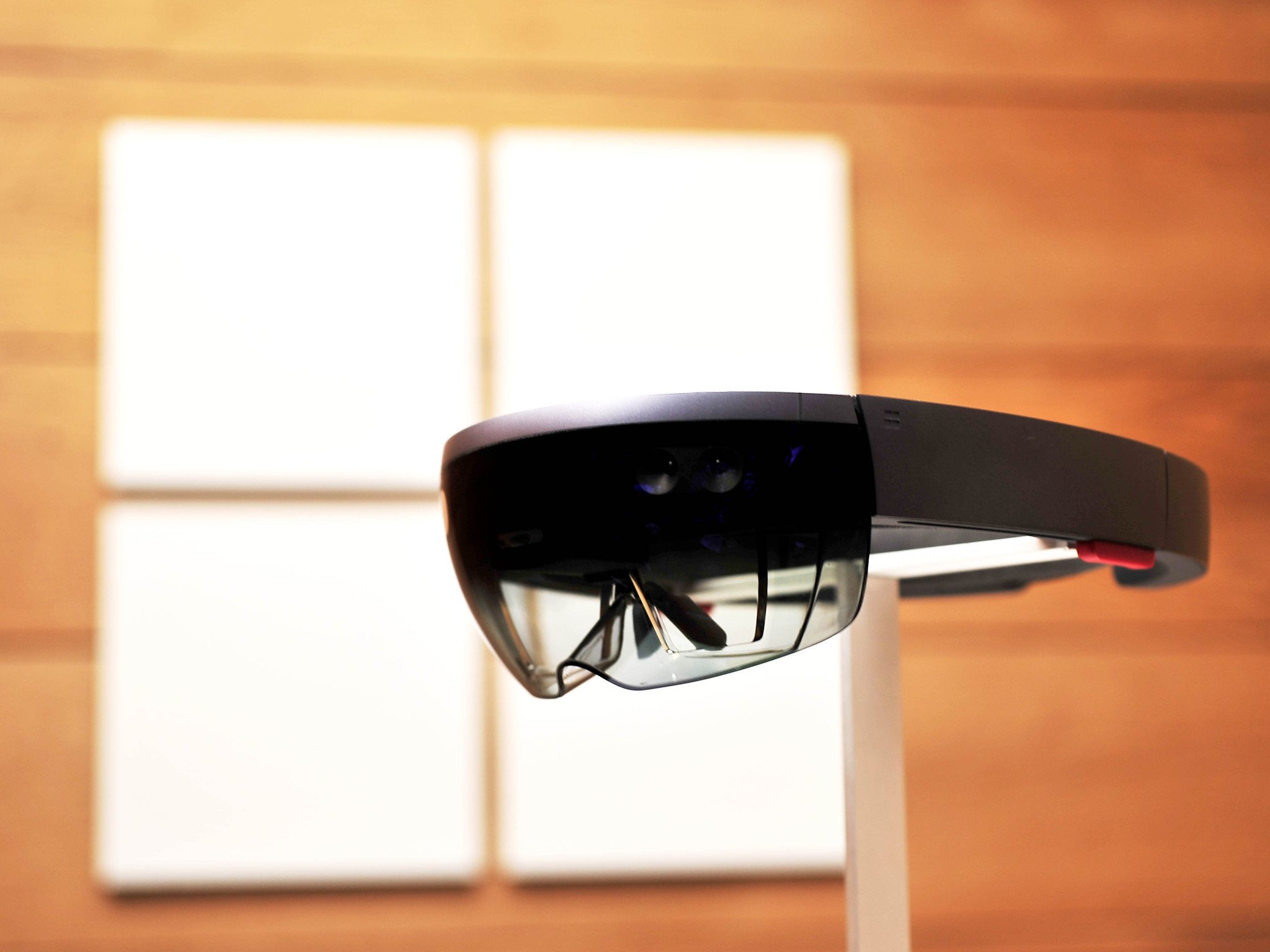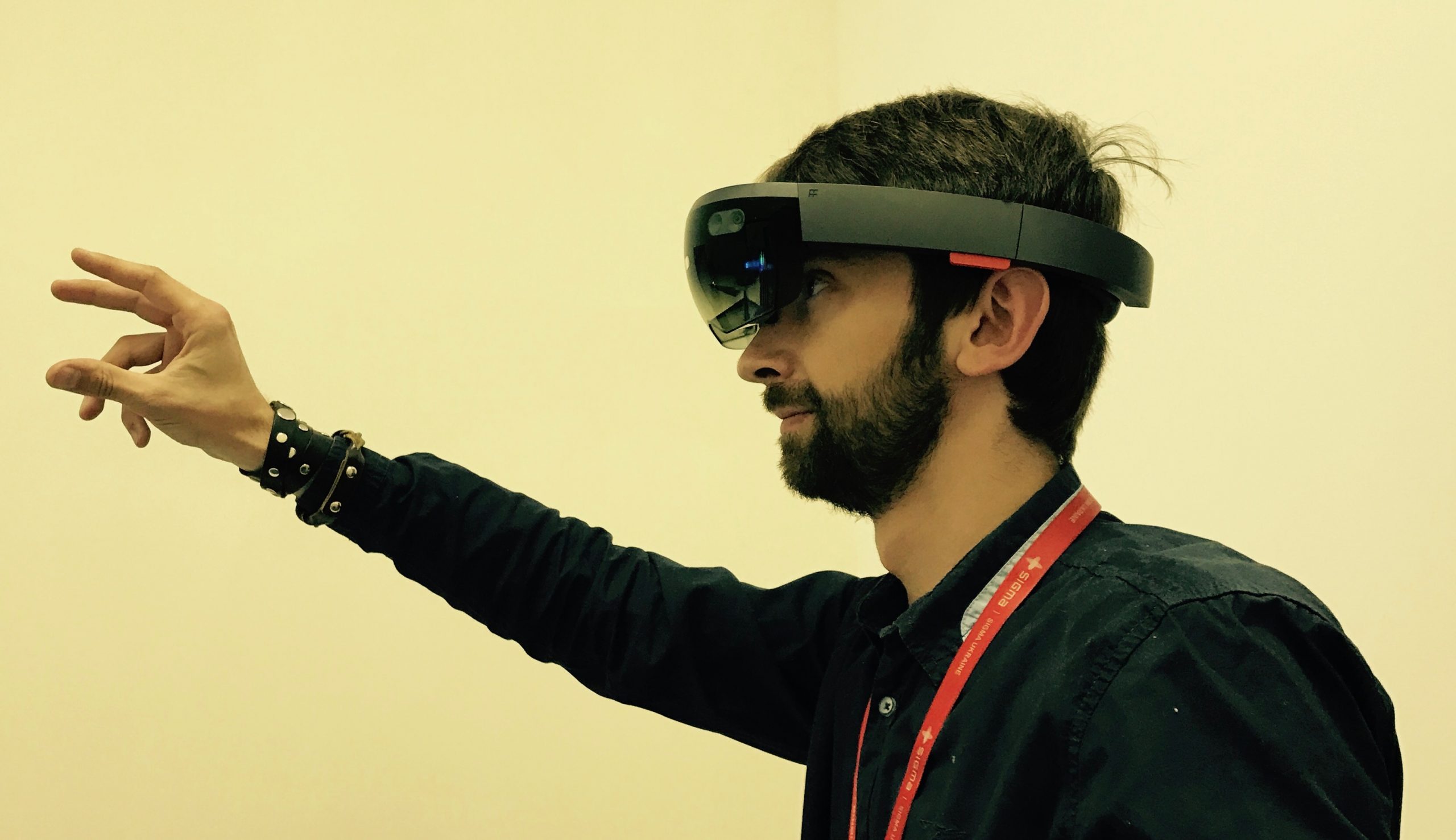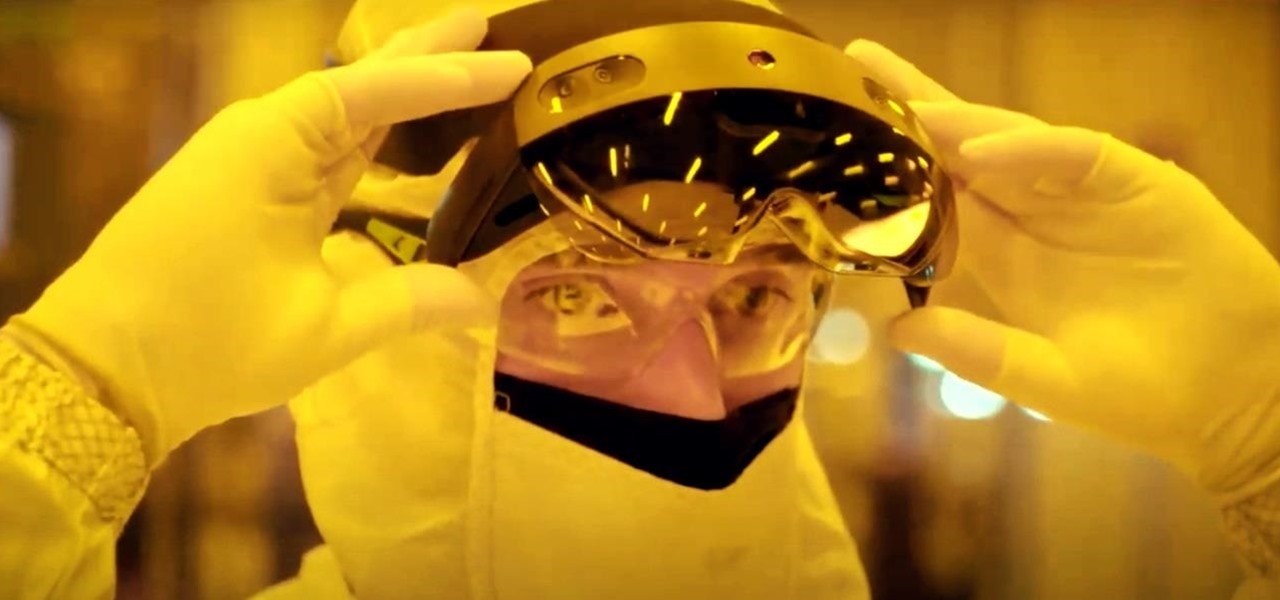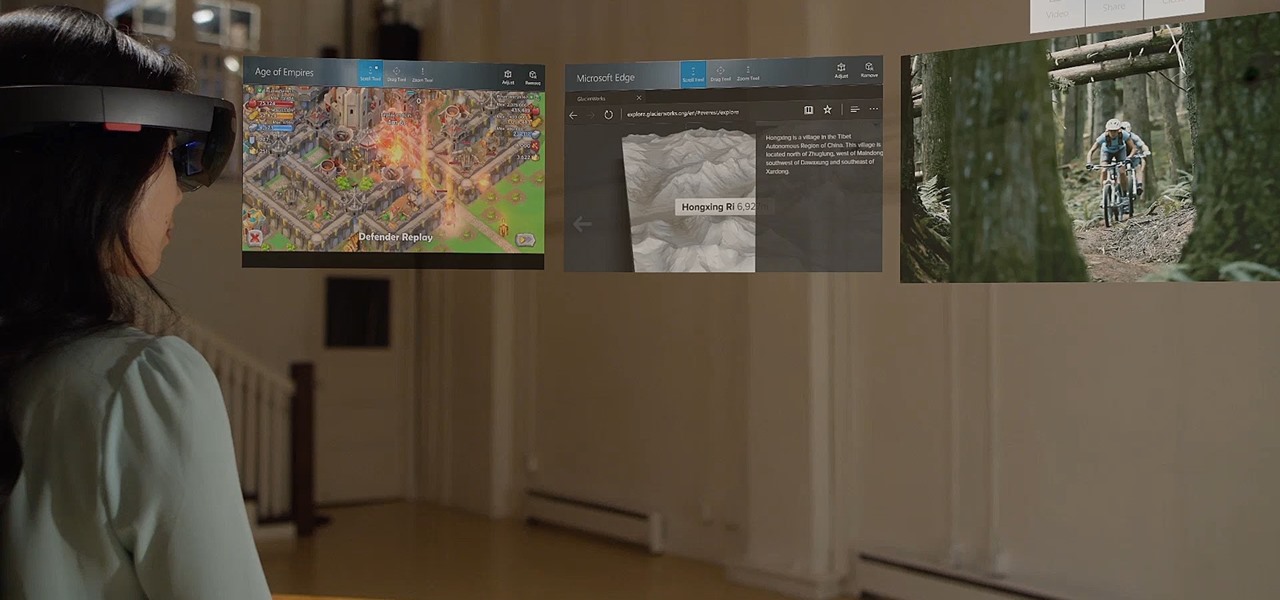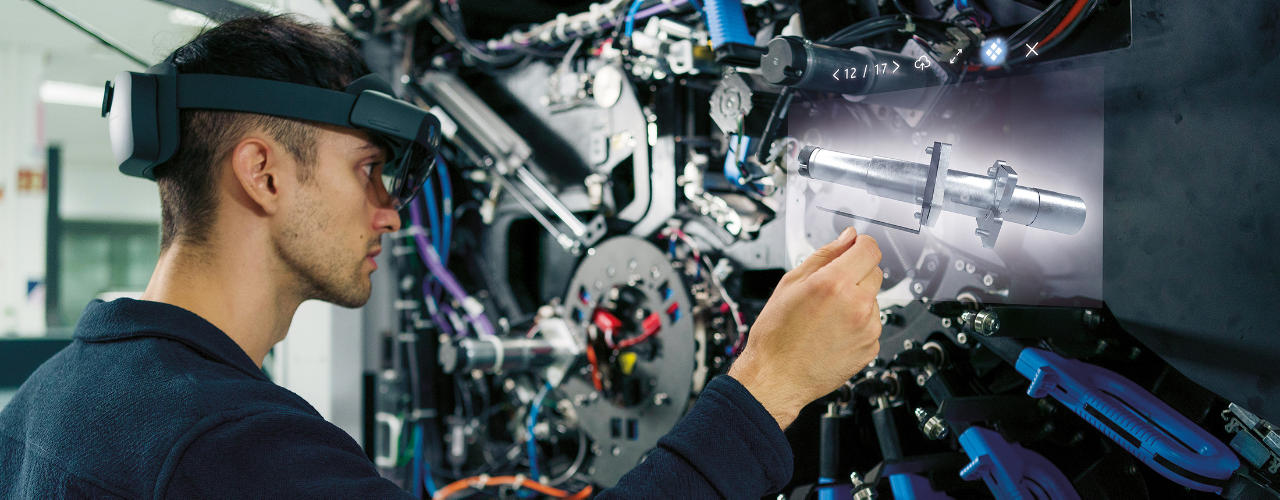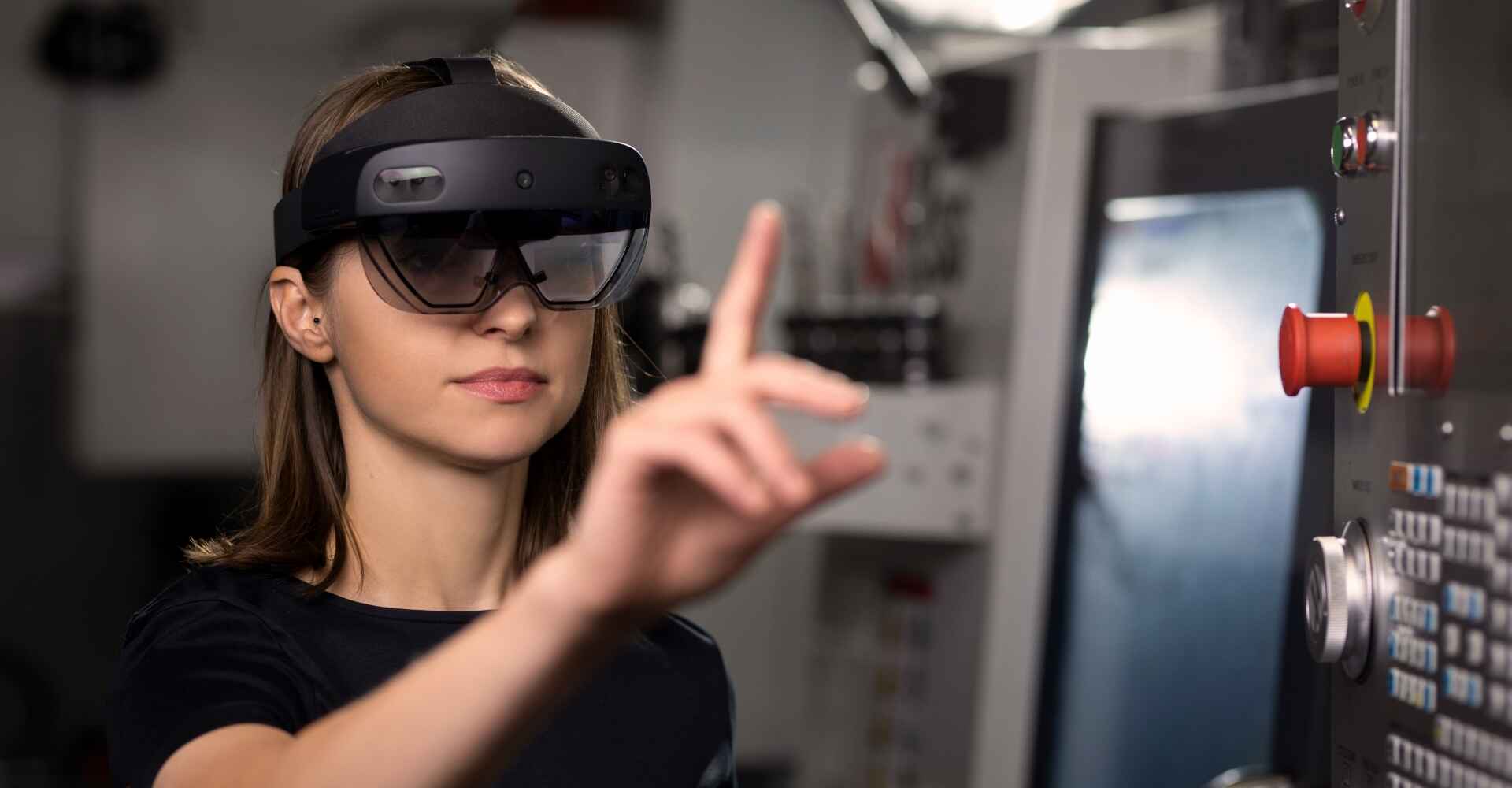Introduction
The HoloLens is a groundbreaking mixed reality device developed by Microsoft. It combines virtual reality and augmented reality to create immersive experiences that blend the digital world with the real world. As one of the most innovative and advanced devices of its kind, the HoloLens is equipped with several key components that enable its impressive capabilities.
In this article, we will explore the various parts of the HoloLens and understand how each contributes to its functionality. From the optical system to the software and development tools, we will delve into the inner workings of this cutting-edge device.
But before we dive into the specifics, let’s take a moment to understand the fundamental concept behind the HoloLens.
At its core, the HoloLens is designed to overlay holographic images onto the real world, allowing users to interact with digital content in a more natural and intuitive way. Unlike virtual reality devices that completely immerse users in a digital environment, the HoloLens enables users to see and interact with virtual objects while still being aware of their physical surroundings. This unique feature opens up a wide range of possibilities for various industries, including gaming, education, healthcare, and design.
Now, let’s explore the key components that make the HoloLens such a powerful and game-changing device.
Optical System
The optical system is a critical part of the HoloLens, responsible for projecting holographic images onto the user’s field of view. It consists of several components that work together to deliver an immersive mixed reality experience.
One of the main components of the optical system is the waveguide display. This display uses a series of transparent glass panels with built-in nanoscale gratings to reflect and guide light. By manipulating the light, the waveguide display is able to create holographic images that appear seamlessly integrated into the user’s real-world environment.
Another important component of the optical system is the depth camera, which captures the user’s environment in real-time. This allows the HoloLens to understand the depth and spatial information of the surroundings, enabling precise placement of holograms in the physical space. With the depth camera, the HoloLens can accurately track the user’s movements and adjust the holographic images accordingly, creating a more realistic and interactive experience.
Additionally, the HoloLens utilizes an inertial measurement unit (IMU) to track the user’s head movements. The IMU consists of various sensors such as accelerometers, gyroscopes, and magnetometers, which work together to determine the device’s position and orientation in 3D space. This information is crucial for aligning the holographic images with the user’s perspective, ensuring that the virtual objects appear anchored in the real world.
Moreover, the optical system incorporates a set of cameras that capture the user’s gestures and hand movements. These hand tracking cameras enable users to interact with the holograms using natural gestures, such as tapping, grabbing, and pinching. By tracking the user’s hand movements, the HoloLens can detect and respond to gestures, allowing for intuitive and immersive interactions with the virtual content.
Overall, the optical system in the HoloLens plays a crucial role in delivering realistic and seamless mixed reality experiences. Through the combination of waveguide displays, depth cameras, IMUs, and hand tracking cameras, the HoloLens is able to create a visually stunning and interactive environment that blends the real world with the virtual.
Sensors
The HoloLens is equipped with a variety of sensors that enable it to understand and interact with the user’s environment. These sensors work together to gather data and provide crucial information for creating immersive mixed reality experiences.
One of the primary sensors in the HoloLens is the depth sensor. This sensor utilizes a combination of infrared lasers and cameras to accurately measure the distance between objects and create a detailed depth map of the surrounding environment. By understanding the depth information, the HoloLens can precisely position and interact with holographic objects, ensuring a seamless integration with the real world.
In addition to the depth sensor, the HoloLens also features a high-resolution color camera. This camera captures the user’s surroundings, allowing for the overlay of holographic images onto the real world. The color camera provides the HoloLens with visual input, enabling it to understand the user’s environment and adjust the holograms accordingly.
Furthermore, the HoloLens incorporates a range of other sensors, including an accelerometer, gyroscope, and magnetometer. These sensors work together as an inertial measurement unit (IMU) to track the device’s position and orientation in 3D space. By continuously monitoring the motion and rotation of the HoloLens, the IMU ensures that the holographic images align accurately with the user’s perspective, creating a more immersive and realistic experience.
The HoloLens also includes spatial mapping sensors, which generate a 3D mesh of the user’s environment. These sensors use infrared depth data and visual input to create a detailed representation of the physical space. This spatial mapping data allows the HoloLens to understand the geometry of the environment, enabling the placement of holograms on surfaces and objects with precision.
Additionally, the HoloLens incorporates microphones that capture audio input. These microphones allow users to interact with the device through voice commands, providing a more natural and hands-free experience. The HoloLens uses advanced algorithms to process the audio and accurately interpret the user’s commands, facilitating seamless control of the mixed reality environment.
Overall, the sensors in the HoloLens play a crucial role in understanding the user’s environment and enabling precise interaction with holographic content. By combining depth sensing, visual input, IMU tracking, spatial mapping, and audio input, the HoloLens delivers a truly immersive and interactive mixed reality experience.
Holographic Processing Unit (HPU)
The Holographic Processing Unit, also known as the HPU, is a specialized chip designed specifically for the HoloLens. It is responsible for processing the vast amount of data required to create and render holographic images in real-time. The HPU combines both hardware and software components to deliver the impressive computational power needed for immersive mixed reality experiences.
At the heart of the HPU is a custom-built multiprocessor system-on-chip (SoC). This SoC includes multiple CPU cores, GPU cores, and custom silicon dedicated to accelerating holographic processing tasks. The parallel processing capabilities of the HPU enable it to handle complex calculations and render high-quality holograms with low latency.
In addition to the processing power, the HPU also integrates dedicated hardware for sensor fusion. This hardware component fuses data from various sensors, such as the depth sensor, color camera, and IMU, to provide accurate and precise tracking of the user’s position and movements. The sensor fusion capabilities ensure that the holographic images align seamlessly with the real world and respond to the user’s interactions in real-time.
Furthermore, the HPU boasts advanced algorithms and machine learning capabilities. These algorithms optimize performance, enhance image quality, and enable the HoloLens to learn from user interactions and adapt to individual preferences. The machine learning capabilities of the HPU allow the device to understand and interpret gestures, voice commands, and even user gaze, further enhancing the immersive nature of the mixed reality experience.
The HPU is not only responsible for processing holographic images but also handles spatial sound processing. The HoloLens is equipped with multiple microphones and speakers that enable spatial audio, creating a 3D soundscape that enhances the immersion and realism of the virtual environment. The HPU processes audio signals to deliver accurate spatial sound positioning, enhancing the sense of presence and depth perception for the user.
In summary, the Holographic Processing Unit is a fundamental component of the HoloLens, providing the necessary computational power and advanced algorithms to create and render holographic images in real-time. With its multiprocessor architecture, sensor fusion capabilities, machine learning algorithms, and audio processing capabilities, the HPU plays a crucial role in delivering the immersive and interactive mixed reality experiences that the HoloLens is known for.
Display
The display of the HoloLens is a key component that enables users to see and interact with holographic images overlaid on their real-world environment. The display technology used in the HoloLens is called waveguide optics, which allows for the seamless blending of virtual objects with the physical world.
The waveguide display consists of transparent glass panels with built-in nanoscale gratings. These gratings are used to diffract and reflect light, guiding it to the user’s eyes and creating the illusion of holographic objects in the user’s field of view. This unique display technology enables users to see virtual content alongside real-world objects without obstructing their vision.
The HoloLens display offers a wide field of view of about 35 degrees, allowing users to see holograms that appear as if they are integrated into their surroundings. The high-resolution display provides sharp and detailed holographic images, enhancing the overall visual experience.
One notable feature of the HoloLens display is its ability to adapt to varying lighting conditions. The device is equipped with light sensors that analyze the ambient lighting and adjust the brightness and contrast of the holographic images accordingly. This ensures optimal visibility and clarity of the holograms, regardless of the environment.
Moreover, the HoloLens display supports a variety of interaction methods. Users can use gaze gestures, where they focus their eyes on specific holograms to interact with them. Additionally, hand gestures and voice commands can also be used to manipulate and control holographic objects in the user’s field of view.
The HoloLens display also supports 3D spatial sound, allowing for a more immersive experience. The sound appears to come from the direction where the holograms are located, enhancing the sense of realism and presence.
In summary, the HoloLens display utilizes waveguide optics technology to seamlessly blend holographic images with the real world. With a wide field of view, high resolution, and adaptive lighting, the display provides users with a visually stunning mixed reality experience. By supporting various interaction methods and spatial sound, the HoloLens display further enhances user immersion and engagement.
Audio
The audio capabilities of the HoloLens play a crucial role in enhancing the immersive mixed reality experience. The device is equipped with a sophisticated audio system that provides spatial sound, enabling users to perceive sound coming from different directions and depths, similar to how they experience sound in the real world.
The HoloLens utilizes multiple built-in microphones to capture audio input from the user’s surroundings. These microphones allow the device to detect and process environmental sounds, ensuring that the virtual audio content seamlessly integrates with the real-world environment. This capability enhances the sense of presence and immersion for the user.
One key feature of the HoloLens audio system is spatial sound processing. By leveraging advanced algorithms, the device can accurately position virtual sounds in 3D space, simulating depth, direction, and distance. This capability allows users to experience sounds as if they are coming from specific holographic objects or locations within their field of view. For example, if a virtual object is placed to the right of the user, the HoloLens will generate sound that appears to originate from that direction.
The spatial sound feature enhances the realism and interactivity of the virtual environment. Users can locate and identify virtual objects based on the audio cues, making interactions more intuitive and immersive. Additionally, spatial sound also contributes to the sense of presence and depth perception, as the audio aligns with the visual information provided by the holograms.
Furthermore, the HoloLens supports binaural audio encoding, delivering a more accurate and realistic audio experience. Binaural audio takes into account the unique characteristics of each user’s ears and head shape to create a personalized sound experience. By simulating the way sound waves interact with each user’s unique anatomy, the binaural audio encoding produces a more natural and immersive audio environment.
The HoloLens also allows users to interact with audio content using both voice commands and gestures. Users can control and manipulate virtual objects through voice control, providing a hands-free and intuitive way of interacting with the mixed reality environment. Additionally, gestures can be used to modify and adjust audio settings, allowing users to fine-tune their audio experience as needed.
In summary, the audio capabilities of the HoloLens, including spatial sound processing and binaural audio encoding, greatly contribute to the immersive nature of the mixed reality experience. By providing accurate positioning of virtual sounds, users can perceive sounds as if they are coming from specific holographic objects or locations, enhancing realism and interactivity. The combination of audio, visual, and interactive elements creates a holistic and engaging mixed reality experience.
Battery
The battery is a vital component of the HoloLens, providing the necessary power to sustain its operations and enable users to enjoy extended periods of mixed reality experiences. The HoloLens incorporates a built-in rechargeable battery that offers a balance between performance and portability.
While the exact battery capacity may vary between different HoloLens versions, the device is designed to be lightweight and comfortable to wear for extended periods. The battery is carefully optimized to provide sufficient power to support the device’s various components without adding unnecessary weight or bulk.
The HoloLens is engineered to maximize battery life while delivering a satisfactory mixed reality experience. The device employs power management techniques to optimize energy consumption, ensuring that battery life is extended as much as possible. Additionally, the device intelligently adjusts power allocation based on usage patterns and user interactions, further optimizing battery usage.
The battery life of the HoloLens can vary depending on usage, with factors such as the intensity of holographic rendering, audio processing, and sensor activity impacting the overall battery performance. On average, the HoloLens offers several hours of usage before requiring a recharge. However, it is worth noting that intensive operations, such as running resource-demanding applications or rendering complex holograms, can significantly reduce battery life.
To recharge the HoloLens battery, users can connect the device to a power source using the included charging cable and adapter. The charging time may vary depending on the remaining battery level, but generally, the battery can be fully charged within a couple of hours.
It is important to keep in mind that extended usage of the HoloLens, especially when running processor-intensive applications, can generate heat. To maintain optimal performance and prolong the lifespan of the battery, it is recommended to operate the HoloLens within acceptable temperature ranges and avoid exposing it to extreme temperatures for extended periods.
Considering the portable nature of the HoloLens, it is also worth noting that the battery can be impacted by external factors, such as the brightness level of the display and the intensity of wireless connectivity. Adjusting these settings can help optimize battery usage and extend the device’s overall battery life.
In summary, the battery of the HoloLens is an essential component that powers the device, allowing users to engage in immersive mixed reality experiences. With careful optimization and power management techniques, the HoloLens offers a balanced battery life that can support several hours of continuous usage. By considering factors such as holographic rendering intensity and wireless connectivity, users can maximize the battery’s performance and enjoy extended periods of mixed reality interaction.
Input and Controls
Input and controls are vital aspects of the HoloLens that enable users to interact with the mixed reality environment and manipulate holographic objects. The device incorporates various input methods, allowing for intuitive and natural interactions.
One of the primary input methods on the HoloLens is gaze gestures. By simply looking at a holographic object, users can select and interact with it. Gaze gestures allow for a hands-free experience, as users can navigate menus, perform actions, and manipulate objects by focusing their eyes on specific elements within the field of view. The HoloLens accurately tracks eye movements, enabling precise and responsive gaze-based interactions.
In addition to gaze gestures, the HoloLens supports voice commands. By using voice recognition technology, users can control the device and perform actions by speaking predefined commands. Voice commands allow for a more natural and seamless interaction with the mixed reality environment, freeing users from the limitations of physical buttons or touchscreens.
Furthermore, the HoloLens incorporates gesture recognition, enabling users to interact with holographic objects using their hands. Hand gestures, such as tapping, grabbing, pinching, and waving, can be detected by the HoloLens sensors, allowing for intuitive manipulation and control of virtual content. Users can resize objects, rotate them, or move them around within the field of view, creating a more immersive and engaging experience.
For precise selection and input, the HoloLens also includes a clicker. This handheld device functions as a trigger, allowing users to perform actions by pressing the clicker. The clicker is particularly useful for applications where more precise control is required, providing a physical input option in addition to the hands-free and gesture-based interaction methods.
Additionally, the HoloLens supports Bluetooth connectivity, enabling users to connect external input devices such as keyboards and game controllers. This expands the range of input options and allows for more flexibility in interacting with the mixed reality environment, catering to different preferences and application requirements.
Overall, the HoloLens provides a range of input and control options, including gaze gestures, voice commands, hand gestures, and the clicker. The combination of these methods allows for intuitive and natural interactions with the holographic content, enhancing the overall user experience. With the added flexibility of Bluetooth connectivity, users have the option to utilize external input devices for more diverse input possibilities.
Software and Development
The software and development tools behind the HoloLens play a crucial role in enabling the creation and deployment of immersive mixed reality experiences. Microsoft provides developers with a comprehensive software ecosystem, making it easier to develop applications and content for the HoloLens.
One of the primary software components of the HoloLens is Windows Holographic Operating System. Built on top of Windows 10, this specialized operating system provides the foundation for running holographic applications on the device. The Windows Holographic Operating System supports a wide range of programming languages, including C#, C++, and JavaScript, offering developers the flexibility to choose the most suitable language for their projects.
Microsoft provides the HoloToolkit, a set of libraries and tools, to assist developers in building holographic applications. The HoloToolkit offers a variety of features, including spatial mapping, voice commands, gesture recognition, and spatial sound, making it easier for developers to implement these functionalities in their applications. The HoloToolkit also provides a range of pre-built components and UI elements to support the creation of intuitive and visually appealing holographic user interfaces.
In addition to the HoloToolkit, Microsoft offers the Unity engine as a powerful development platform for creating 3D content and experiences for the HoloLens. Unity provides a user-friendly interface and a robust set of tools for developing interactive applications, making it accessible for both experienced developers and those new to mixed reality development.
Developers can utilize the Windows Mixed Reality platform to distribute and deploy their applications to HoloLens devices. The platform provides seamless integration with the Windows Store, enabling developers to reach a wide audience and distribute their applications globally.
Microsoft also provides comprehensive documentation, tutorials, and sample projects to support developers in their journey to create compelling holographic experiences. The developer community surrounding the HoloLens is vibrant and active, with forums and online resources readily available for knowledge sharing and troubleshooting.
Furthermore, the HoloLens supports the Universal Windows Platform (UWP), which allows developers to create applications that run not only on the HoloLens but also on other Windows 10 devices. This enables developers to maximize their reach and target a broader audience with their applications across the entire Windows ecosystem.
In summary, the software and development tools provided by Microsoft empower developers to create immersive mixed reality experiences for the HoloLens. From the specialized operating system and HoloToolkit to the Unity engine and Windows Mixed Reality platform, developers have access to a robust ecosystem that supports the creation, distribution, and deployment of holographic applications. With comprehensive documentation and an active developer community, developers are well-equipped to unleash their creativity and bring unique holographic experiences to life.
Conclusion
The HoloLens is a groundbreaking mixed reality device that seamlessly integrates the virtual world with the real world. Throughout this article, we explored the various components that make the HoloLens such a powerful and innovative device.
We started by examining the optical system, which allows the HoloLens to project holographic images onto the user’s field of view. The sensors of the HoloLens enable it to understand the user’s environment and accurately track their movements, ensuring precise interaction with holographic content.
The Holographic Processing Unit (HPU) is a specialized chip that plays a vital role in processing data and rendering holographic images in real-time. The display of the HoloLens utilizes waveguide optics technology to seamlessly blend virtual objects with the physical world, providing users with an immersive mixed reality experience.
The audio capabilities of the HoloLens deliver spatial sound, creating a realistic audio environment that enhances the immersion and interactivity of the holographic content.
The battery provides the necessary power to sustain the HoloLens operations, allowing users to engage in extended periods of mixed reality experiences.
The input and control methods, including gaze gestures, voice commands, hand gestures, and the clicker, enable users to intuitively interact with holographic objects and manipulate virtual content.
Lastly, the software and development tools provided by Microsoft support the creation and deployment of immersive mixed reality experiences, making it accessible for developers to build compelling applications and content for the HoloLens.
Overall, the HoloLens represents a paradigm shift in how we interact with digital content and the real world. With its advanced technology and powerful components, the HoloLens opens up a world of possibilities across various industries, from gaming and education to healthcare and design. As technology continues to evolve, we can expect the HoloLens to revolutionize the way we perceive and engage with our surroundings.







